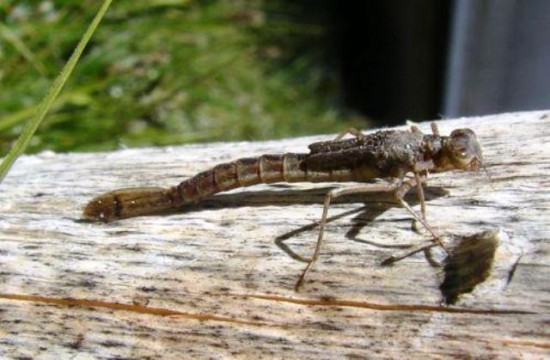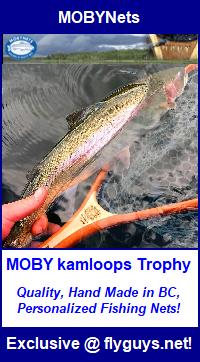– Pre Hatch Six Pack –
Six Essential Still Water Ice Off Fly Patterns
(2)
The Slim Damsel
Damselflies (Suborder Zygoptera) go through multiple stages of development, or instars, between the egg and adult life stages, which is often a multi-year period. What this means is that in lakes with significant populations, the immature stage of this insect can offer a significant food source. At times, fish will become quite selective on the immature stage, and while most anglers have patterns to represent emergence-time insects, few have patterns to represent immature specimens. For example, it would be common to fish a damsel pattern during the emergence period, which in the BC interior peaks, broadly, early to mid-June. Damsels that are maturing and migrating to shoreline vegetation to hatch would be roughly 30 mm in length. In contrast, immature damsels that attract the attention of fish in early spring might range from 10-25 mm. Anglers prepared for instances where trout key on the immature damsel stage will have patterns representing their smaller sizes and brighter, instar, colouring … enter the Slim Damsel!
The Slim Damselfly can be effectively fished on a floating line with a slow retrieve, or even static (or almost so) under an indicator. Where a more active retrieve is desired, a sinking or sinking tip fly line may be a better option, varying the sink time and retrieval speed until discovering the sweet spot. Either way we’re sure the Slim Damsel it will prove its worth and earn a permanent home in your fly box!
Here’s how to tie the Slim Damsel …….
You can find more detailed information about Damselflies on our everything Damselfly page. 😉
Graham’s Bloodworm | Slim Damsel | Apricot Daphnia | Squirly UV Leech | Cinderella (Glass Scud) | Double Float Immature Dragon
Like our stuff? Subscribe by ![]() Feed or
Feed or ![]() Email
Email .jpg)










